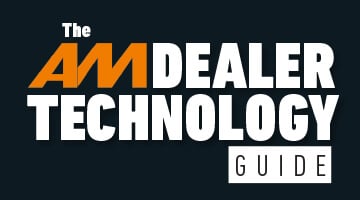Advertisement feature from Mediahawk
The spring 2025 edition of Mediahawk’s automotive trends report uncovers numerous insights into the changing face of automotive marketing, highlighting what’s working and where there’s still more to be done.

The data shows steadier call volumes than dealerships have seen in recent years, and calls remain a major source of sales leads. That means boosting call volumes and using call tracking to understand buying journeys and marketing return on investment are vital ways to win in a competitive market.
But that’s just the beginning. There are plenty of other approaches dealers can take to increase call volumes and conversion rates. So, let’s build on the insights from the report and take a look at three essential tactics for car dealerships to drive more phone leads.
1: Fix the ‘leaky funnel’ to capture more leads
Although inbound calls are a key source of high-intent buyers, they’re notoriously difficult to manage – or even answer – in busy dealerships.
When Prospecting Dynamics reviewed around 750,000 sales calls to dealerships on the Mediahawk platform, it found that 20% went unanswered. When callers did get through, 40% of sales calls weren’t logged on a CRM or lead management system (LMS) – and 40% of callers were offered no further action.
 This is the ‘leaky funnel’. Plenty of calls come into the funnel, but there are also plenty of gaps where leads can leak out (overstretched receptionists, salespeople dealing with walk-ins, missed or inaccurate messages, and so on).
This is the ‘leaky funnel’. Plenty of calls come into the funnel, but there are also plenty of gaps where leads can leak out (overstretched receptionists, salespeople dealing with walk-ins, missed or inaccurate messages, and so on).
As a result, many dealers have discouraged calls by focusing their used car locators on form fills, knowing that a completed web form will automatically appear in the LMS.
However, advanced call tracking platforms like Mediahawk can automatically add sales calls to the LMS. And what’s really exciting is that it’s now possible to identify calls that haven’t been logged in the LMS and provide daily exception reports for sales managers to follow up on. That means fewer missed opportunities and allows dealerships to offer superior customer service by following up with every potential buyer – a key differentiator in a crowded market.
“We know we can generate lots of sales leads, but they can leak out during the sales process,” says Russell Brown, Head of Marketing at the Dick Lovett dealer group. “Previously, we had no means to check this. Now, with Mediahawk, leads are automatically added to our lead management system as soon as a phone call comes in, or if an online enquiry is made.”
2: Use speech AI to optimise campaign performance
The trends report showed a marked increase in the share of calls and web visitors coming from pay-per-click (PPC), which could be due to marketers making better use of the tools at their disposal.
“We’re seeing many more automotive marketers taking advantage of Performance Max and Google Vehicle Ads to reach and engage buyers,” says Colin Hudson, Head of Operations at Mediahawk. “The next step is to use AI tools to understand and optimise campaign performance.”

AI-powered Speech Analytics tools can be particularly useful, analysing the sources, topics, and outcomes of calls to give marketers full visibility of their most valuable leads. That enables them to focus their budgets on the channels and campaigns that deliver results and avoid wasted spend.
Marketers can also convert buyer insights into positive signals for their Performance Max campaigns – creating custom audiences to target similar buyers – and get an even greater return on their ad spend.
3: Monitor your visitor-to-call ratio
The visitor-to-call ratio (VCR) metric compares the number of website visits to the number of calls originating from the website, showing how effective a dealership’s website is at generating inbound calls.
In the latest reporting period, Mediahawk’s data saw a small but significant drop in VCR in the automotive market. This indicates that although dealerships are doing a great job of generating web traffic, there’s room for improvement in converting visitors into callers.
Many marketers in the sector explain they’re focusing on brand awareness – especially if they’re bringing new Chinese EV brands into the market. So, it’s possible that many website visitors are in research mode rather than buy mode. However, optimising websites for conversion may help convince some of these browsers to take an additional step and make an enquiry.
“Monitoring your VCR helps you understand buyers’ journeys and identify the factors that make the difference between them making a call or clicking away to another site,” says Faye Thomassen, Head of Marketing at Mediahawk. “Then you can start to experiment with optimisations, like changing the size or location of your phone number, for example. With one eye on your VCR, you’ll quickly be able to tell what’s working.”
Summary
Through a combination of call tracking, AI-powered insights and automation, and a focus on the metrics that matter, you can position your dealerships to attract more buyers and win more business.
Together, these tactics and tools enable you to track and understand every touchpoint on buyers’ journeys, so you can make informed decisions that boost those all-important calls from high-intent leads.
Read the full report
To explore the full results from the latest reporting period – along with expert perspectives and practical tips for improving your marketing efforts – get your copy of the spring 2025 automotive trends report.


















Login to comment
Comments
No comments have been made yet.